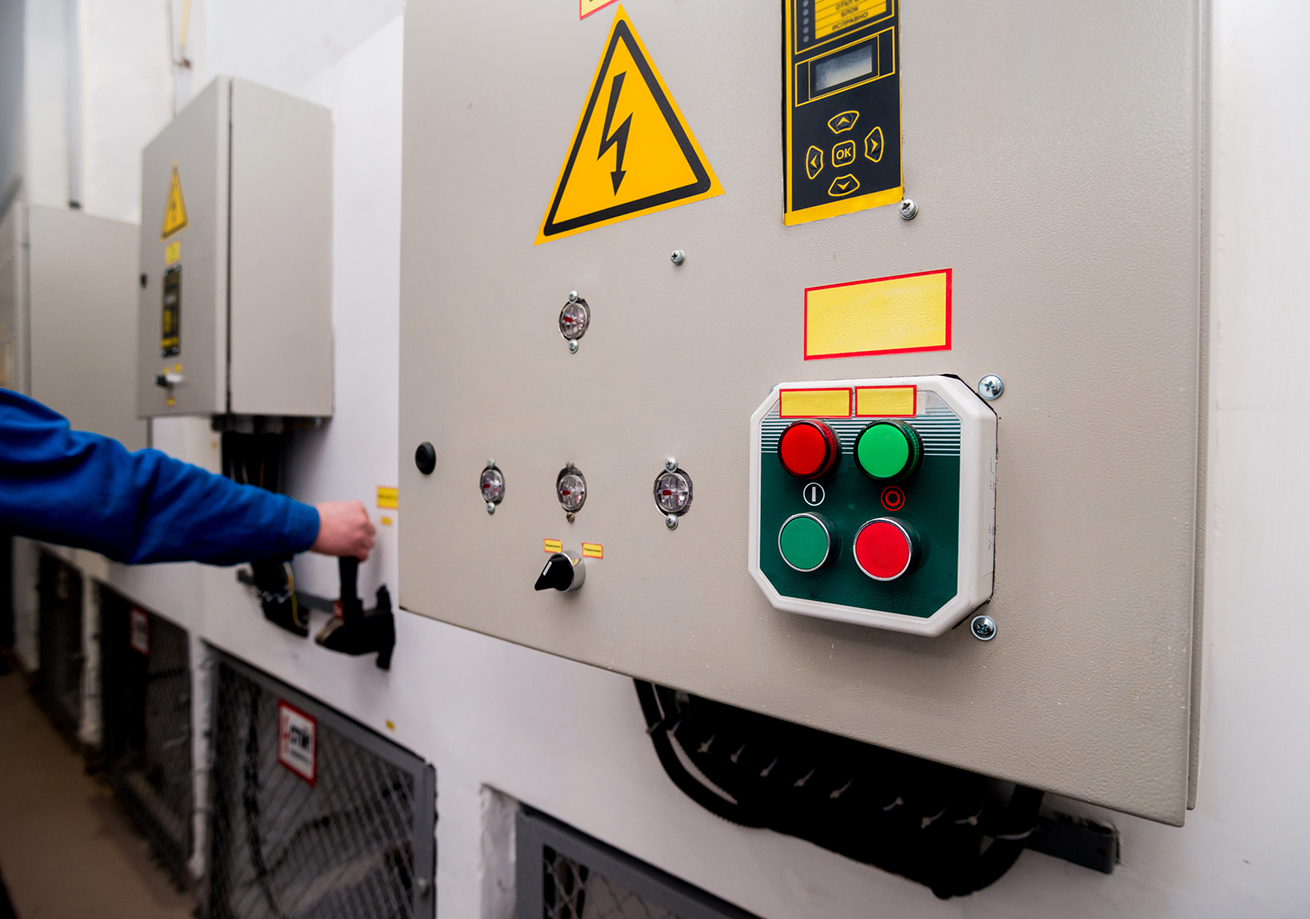The Greatest Guide To Roar Solutions
The Greatest Guide To Roar Solutions
Blog Article
The Only Guide to Roar Solutions
Table of Contents9 Simple Techniques For Roar SolutionsRoar Solutions for Dummies6 Easy Facts About Roar Solutions Explained
In such an ambience a fire or explosion is possible when 3 fundamental problems are fulfilled. This is commonly described as the "unsafe location" or "burning" triangle. In order to secure installations from a potential surge a technique of analysing and classifying a possibly hazardous area is needed. The objective of this is to guarantee the appropriate choice and installation of tools to ultimately stop an explosion and to guarantee safety of life.
(https://sandbox.zenodo.org/records/174151)
No tools must be set up where the surface temperature level of the tools is more than the ignition temperature level of the offered threat. Below are some usual dirt harmful and their minimal ignition temperature level. Coal Dirt 380C 225C Polythene 420C (thaws) Methyl Cellulose 420C 320C Starch 460C 435C Flour 490C 340C Sugar 490C 460C Grain Dirt 510C 300C Phenolic Resin 530C > 450C Aluminium 590C > 450C PVC 700C > 450C Soot 810C 570C The probability of the danger existing in a focus high sufficient to trigger an ignition will vary from location to location.
In order to identify this threat a setup is separated right into locations of danger depending upon the amount of time the hazardous exists. These locations are described as Areas. For gases and vapours and dirts and fibres there are three areas. Zone 0 Zone 20 A hazardous atmosphere is highly likely to be existing and might be existing for extended periods of time (> 1000 hours annually) and even continually Zone 1 Area 21 A harmful atmosphere is possible however unlikely to be existing for long periods of time (> 10 450 C [842 F] A category of T6 means the minimum ignition temperature level is > 85 C [185 F] Harmful location electric devices maybe designed for usage in greater ambient temperature levels. This would certainly indicated on the ranking plate e.g. EExe II C T3 Ta + 60C( This suggests at 60C ambient T3 will not be exceeded) T1 T1, T2, T3, T4, T5, T6 T2 T2, T3, T4, T5, T6 T3 T3, T4, T5, T6 T4 T4, T5, T6 T5 T5, T6 T6 T6 A T Class rating of T1 suggests the maximum surface temperature level generated by the tool at 40 C is 450 C. Thinking the associated T Course and Temperature ranking for the devices are appropriate for the area, you can always utilize a tool with a much more stringent Division ranking than required for the area. There isn't a clear answer to this concern sadly. It truly does rely on the sort of tools and what repair services require to be accomplished. Equipment with specific examination treatments that can not be performed in the area in order to achieve/maintain 3rd event rating. Need to return to the factory if it is before the equipment's solution. Area Repair Service By Authorised Employee: Challenging screening may not be called for nonetheless particular procedures may require to be followed in order for the tools to maintain its 3rd party ranking. Authorized workers have to be employed to execute the work properly Repair service have to be a like for like replacement. New component must be taken into consideration as a straight replacement needing no unique screening of the tools after the repair is complete. Each piece of equipment with an unsafe rating should be assessed separately. These are detailed at a high degree listed below, however, for even more in-depth details, please refer straight to the standards.
Roar Solutions Can Be Fun For Anyone
The devices register is an extensive data source of devices documents that consists of a minimum set of fields to determine each thing's place, technical criteria, Ex lover category, age, and environmental information. This info is critical for tracking and taking care of the devices successfully within harmful locations. On the other hand, for routine or RBI sampling assessments, the grade will certainly be a mix of Comprehensive and Close inspections. The ratio of Detailed to Shut assessments will be figured out by the Equipment Danger, which is analyzed based on ignition threat (the probability of a source of ignition versus the possibility of a combustible atmosphere )and the harmful location classification
( Zone 0, 1, or 2). This variant will likewise affect the resourcing needs for job preparation. When Whole lots are specified, you can develop sampling strategies based upon the example dimension of each Whole lot, which refers to the variety of arbitrary devices things to be inspected. To figure out the required sample size, two facets require to be evaluated: the dimension of the Lot and the category of assessment, which suggests the degree of initiative that need to be used( lowered, regular, or raised )to the examination of the Lot. By combining the category of inspection with the Lot size, you can after that develop the ideal denial standards for an example, suggesting the allowed variety of malfunctioning things found within that sample. For even more details on this procedure, please describe the Energy Institute Guidelines. The IEC 60079 typical recommends that the maximum interval in between inspections should not go beyond 3 years. EEHA evaluations will also be conducted beyond RBI campaigns as part of set up maintenance and tools overhauls or fixings. These examinations can be credited toward the RBI example dimensions within the affected Lots. EEHA inspections are performed to recognize faults in electric devices. A heavy racking up system is necessary, as a solitary item of devices may have numerous faults, each with varying degrees of ignition danger. If the combined rating of both assessments is less than two times the mistake rating, the Great deal is regarded appropriate. If the Lot is still taken into consideration unacceptable, it must go through a full evaluation or reason, which may trigger stricter inspection procedures. Accepted Lot: The reasons for any mistakes are determined. If an usual failing setting is discovered, added tools may call for examination and fixing. Faults are categorized by seriousness( Safety, Stability, Home cleaning ), making certain that immediate issues are examined and resolved promptly to reduce any kind of effect on safety or procedures. The EEHA data source should track and tape the lifecycle of mistakes Source along with the rehabilitative activities taken. Implementing a robust Risk-Based Examination( RBI )strategy is important for ensuring compliance and security in handling Electric Equipment in Hazardous Areas( EEHA) (hazardous area electrical course). Automated Mistake Scoring and Lifecycle Management: Effortlessly handle mistakes and track their lifecycle to improve examination precision. The introduction of this support for risk-based inspection even more enhances Inspectivity's setting as a best-in-class option for regulatory conformity, along with for any kind of asset-centric evaluation use situation. If you want finding out more, we welcome you to request a demo and find exactly how our service can transform your EEHA administration processes.
Not known Details About Roar Solutions

In regards to eruptive risk, a dangerous location is a setting in which an explosive atmosphere is existing (or may be anticipated to be present) in quantities that require unique precautions for the construction, installment and use of tools. hazardous area electrical course. In this post we explore the obstacles dealt with in the work environment, the risk control measures, and the needed proficiencies to function safely
It issues of contemporary life that we produce, store or take care of a series of gases or liquids that are deemed combustible, and a range of dirts that are deemed flammable. These materials can, in specific problems, form eruptive atmospheres and these can have major and awful effects. A lot of us are acquainted with the fire triangle eliminate any kind of among the three aspects and the fire can not happen, but what does this mean in the context of unsafe areas? When damaging this down right into its easiest terms it is basically: a mix of a specific quantity of launch or leak of a particular material or product, blending with ambient oxygen, and the existence of a resource of ignition.
In a lot of instances, we can do little regarding the levels of oxygen airborne, yet we can have significant influence on resources of ignition, for instance electrical devices. Hazardous locations are recorded on the harmful location classification illustration and are recognized on-site by the triangular "EX-SPOUSE" indication. Right here, amongst other crucial information, areas are divided right into 3 types depending upon the danger, the possibility and period that an eruptive environment will certainly exist; Area 0 or 20 is considered the most dangerous and Zone 2 or 22 is regarded the least.
Report this page